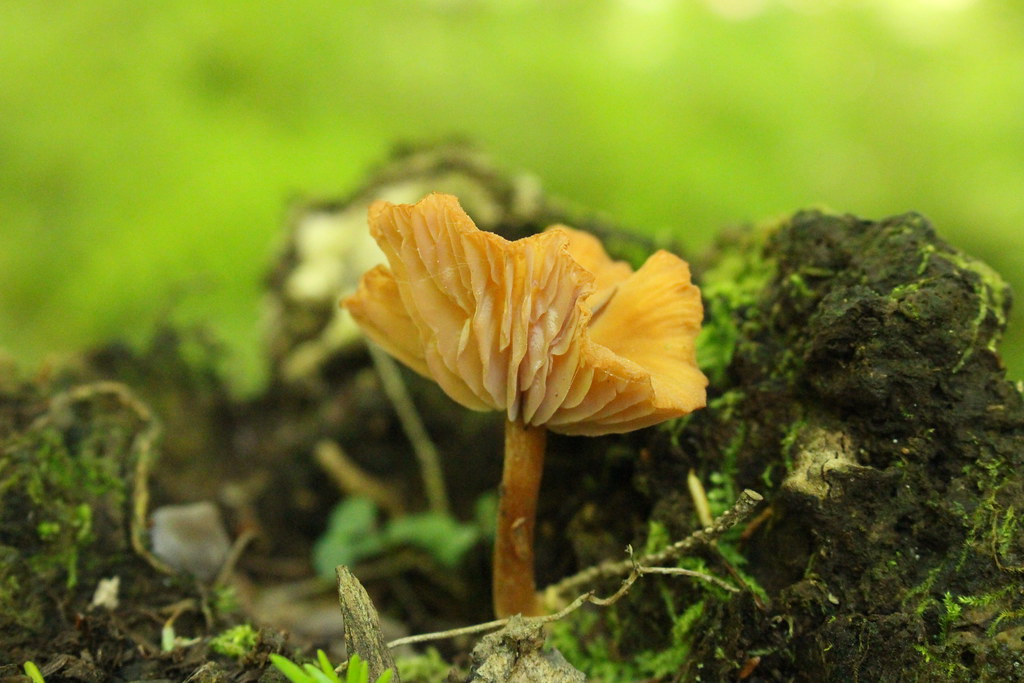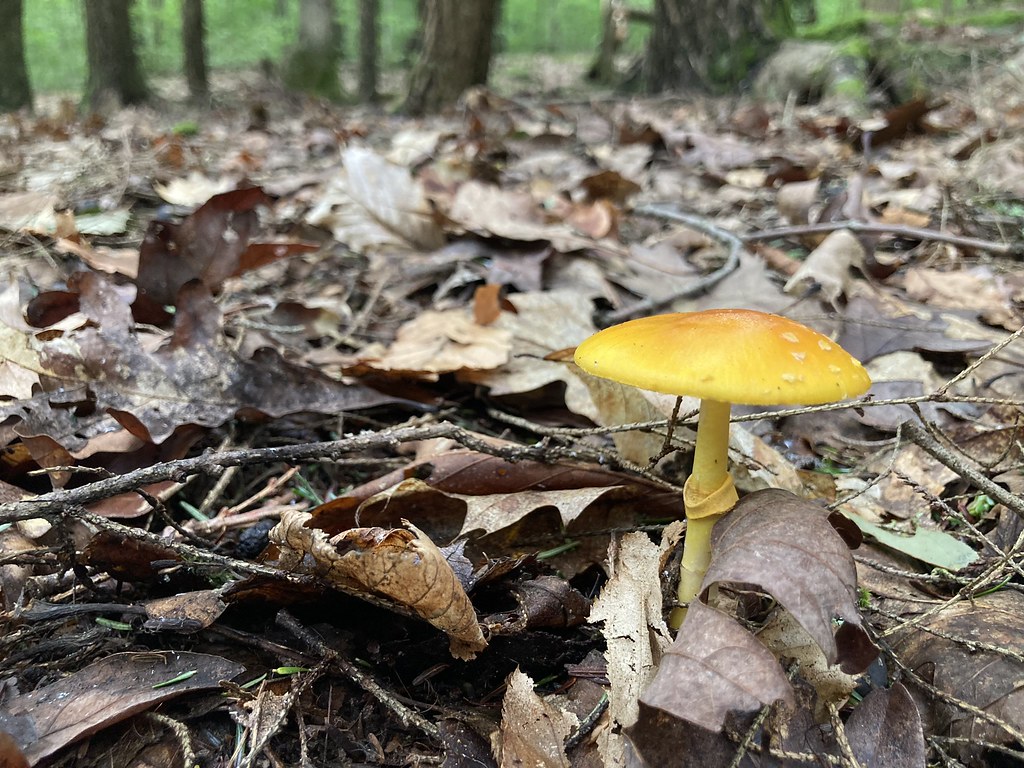Fungus, fungus everywhere

Photo by Jeff Tome Gills on a mushroom.
In most climates around the world and across the seasons, some variety of fungus is found, from those as big as your head to the microscopically small. Around here, those that prefer to grow directly from the ground are likely waiting to pop up after the ground unfreezes, but many fungi that grow directly from trees and logs can be found any time of the year. Fungi can show up as a mushroom growing in a pile of decaying leaves, the mold on food that got lost in the back of the fridge or even the yeast we use to make bread and beer.
This past weekend, I went on a hike in Allegheny National Forest and everywhere you looked there was some variety of fungus. There were giant white mushrooms on the ground, both living and decaying, piles of the orange, cup-shaped Orange Peel Fungus, one extra large Chicken of the Woods and my favorite discovery, the many purple mushrooms we found along the way. I’m sure I’ve walked past a purple mushroom at some point in my life, but I have never noticed so many in such a distinctly purple hue. I find lots of white and brown fungi, with a healthy dose of red, orange and yellow. Perhaps I just haven’t been paying close enough attention, but purple mushrooms feel out of the ordinary.
I have no idea what that purple mushroom was. I did not take a picture. We never stopped to identify it, just chatted about it and went on our way. Honestly, I am absolutely fine never knowing, but maybe I will come across it again and stop to figure out what this little purple mushroom was.
Like every taxonomic group and subject matter in science, there is a unique set of terminology associated with fungi, especially when you are trying to identify a species. There are hyphae and gills, stipes and spores, and the list goes on.
Fungi come in an unbelievably wide range of shapes and colors. Yeast is a single-celled organism and molds are largely just a network of fine, sometimes fuzzy, filaments. As for the mushrooms, their aboveground anatomy might be more familiar to most people. When you break it down to the basics, their anatomy is a lot of variation on a few themes. There is a cap with gills, pores or teeth underneath and occasionally a stalk attaching it down to its growing surface. Sometimes there is a ring around the stalk or it sits in a cup, called a volva. I’m making this all sound very simple but there are a lot of little variations and combinations that can make the identification process surprisingly difficult, especially for beginners, like me.

Brightly colored mushroom popping out of the leaves.
Many fungi reproduce with spores. If you have ever come across an aged puffball mushroom, you might be familiar with spores. Spores are the puff of smoky stuff is that comes out when you poke it. Yeasts and a few other fungi often reproduce by budding, where a new growth begins on the side of an existing organism and continues to grow until it is large enough to split off on its own.
When you see a mushroom, you are looking at the fruiting body, not the entire organism. You have to look below the surface to find the rest of it. Flip a log or dig into the ground and you may find the white, spindly, fuzzy collections of mycelium and hyphae that make up something akin to roots. Sometimes mycelium networks are immense, spanning acres.
There is so much still to learn about these organisms. Some of this mystery means there are also a lot of myths and fairy tales surrounding fungi, mostly the mushrooms. Many of these are based on the fact that some fungi are dangerous when consumed. There are mushrooms just about everywhere that have the potential to leave you with a grumpy digestive system and a couple that could even cause death to humans or a curious pet.
Just because it has chew marks from a squirrel or chipmunk, does not mean it is edible by humans. Remember, you might be able to eat chocolate, but should you feed it to your dog? Digestive systems and what they can tolerate vary widely between different living things. This potential danger, combined with the fact there are so many similar-looking mushrooms, leads to a lot of fear about being around mushrooms at all.
While it is a good practice to make sure you are informed before you put something in your mouth, just touching a mushroom will not hurt you. You would have to eat it to truly experience any potentially negative effects. This is a relief for me, because one of my favorite things about fungi is the wide variety of textures. From jelly fungus to the appropriately named coral fungus to the hard horseshoe fungus on a tree, mushrooms are organisms that provide a delightful range of textures to explore.

Mycelium network
You don’t have to be a forager or an expert mycologist to appreciate the wide range of colors, textures and shapes these fantastic fungi comes in. I was fascinated by the surprise purple mushrooms we found while hiking last weekend, and I love poking Witches Butter for its jelly-like texture. I enjoy making the puffballs puff and turning the bracket fungi on a tree into an impromptu drum set. There are fungi that help us, fungi that infect, that make an organism sick and fungi that play an irreplaceable role in various ecosystems.
If you and the 3-8 year olds in your life are interested in some hands-on exploration and heading outside to look for some colorful fungi, join ACNC on September 9 for the monthly program, ‘Little Explorers’, to learn more.
Audubon Community Nature Center builds and nurtures connections between people and nature. ACNC is located just east of Route 62 between Warren and Jamestown. The trails are open from dawn to dusk and birds of prey can be viewed anytime the trails are open. The Nature Center is open from 10 a.m. until 4:30 p.m. daily except Sunday when it opens at 1 p.m. More information can be found online at auduboncnc.org or by calling 716-569-2345.
- Photo by Jeff Tome Gills on a mushroom.
- Brightly colored mushroom popping out of the leaves.
- Mycelium network









